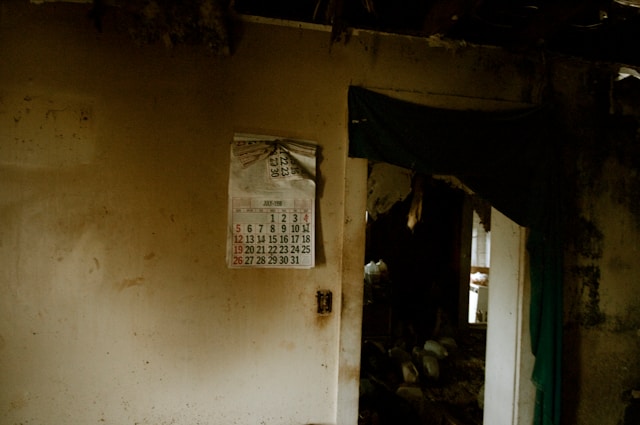Key Takeaways:
- Understanding the risks can save your home from water damage.
- Regular maintenance and using smart home technology are vital preventative measures.
- Immediate action and proper remediation are crucial following water damage.
- Active engagement with insurance and leveraging community support can aid recovery efforts.
Table of Contents:
- Understanding the Risks of Water Damage
- Regular Maintenance: Key to Water Damage Prevention
- Weatherproofing Your Home
- Navigating Insurance and Water Damage Claims
- The Signs of Hidden Water Damage
- Remediation and Restoration After Water Damage
Understanding the Risks of Water Damage
Water damage represents a persistent threat to homeowners, harboring the potential to inflict extensive harm upon residences. It can result from various scenarios, including storms, overflowing bodies of water, or even simple plumbing failures within a household’s systems. The rodent issue can also have a hazardous effect on the integrity of structures. For instance, a sewer line leak repair Jacksonville FL, may be necessary if damage has occurred. Water can degrade building materials, encourage mold growth, and, if not promptly addressed, may lead to irreparable damage, making early detection and intervention crucial.
Homeowners must arm themselves with knowledge about water damage, understanding both its immediate and long-term impacts. Beyond the initial inconvenience, water damage can affect a property’s value, cause health risks due to mold, and disrupt daily life. Hence, becoming familiar with water ingress’s common causes and symptoms is essential for preventative home care.
Regular Maintenance: Key to Water Damage Prevention
Preventive measures are the most reliable form of defense against water damage. Consistent checks for plumbing issues, such as leaks in pipes, faucets, and weak joints, can prevent minor problems from turning into significant ones. Conducting these checks might seem trivial, but their importance cannot be overstated — a little attentiveness can lead to early intervention and save hefty repair costs in the long run. Additionally, the involvement of professionals in periodic inspections can uncover problems that are not visible and correct them before they exacerbate.
When considering water damage prevention, regular maintenance must extend to household appliances. Washer hoses, in particular, are common culprits of in-home flooding. Keeping an eye on the condition of hoses, periodically cleaning the filters, and watching out for unusual noises or operations can prevent unexpected failures. Ensuring these appliances are in good working order and serviced according to the manufacturer’s recommendations is a simple yet effective step toward safeguarding your home against potential water damage.
Weatherproofing Your Home
Varying climates pose different risks for water damage, and weatherproofing is essential for all homeowners. Areas susceptible to heavy rains and storms may experience window and doorway leaks, which can be prevented using proper sealing techniques. A home’s exterior, particularly places like roofing and siding, should be inspected and maintained to ensure they effectively repel water. Homeowners must understand that even minuscule breaches in the home’s defenses can invite moisture-related problems.
Drainage is another aspect of weatherproofing that is often overlooked. Efficient drainage systems are crucial in directing water away from the home. Properly functioning gutters, downspouts, and drains are central to this effort, helping to minimize the potential for water intrusion. It is also beneficial to ensure that landscaping and terrain do not direct water toward the residence, as preventing water from pooling near the foundation walls is critical in averting infiltration.
Navigating Insurance and Water Damage Claims
Understanding your homeowners’ insurance policy specifics is essential before water damage occurs. Certain policies might cover water damage from sudden occurrences, like a broken pipe, but not from gradual issues, such as a slow and unnoticed leak. As a homeowner, you should be well aware of these distinctions, ensuring that your policy adequately protects your interests. Maintaining clear communication with your insurance provider will inform you of necessary policy updates and any additional coverage for comprehensive protection against water-related damages.
In the event of water damage, timely communication with your insurer is critical. Promptly gathering and providing detailed evidence of the damage, alongside any repair estimates and receipts, can streamline your claims process. The enhanced level of organization helps ensure the insurers have all they need to assess your claim efficiently, potentially speeding up the recovery process.
The Signs of Hidden Water Damage
Hidden water damage is among the most pernicious forms, as it often goes unnoticed until substantial damage has been done. Be on the lookout for symptoms such as unusual swelling in wooden structures, peeling paint or wallpaper, a sudden increase in utility bills (suggesting a hidden leak), and persistent musty odors — all indicative of possible water damage. If these signs present themselves, seeking immediate assessment and intervention is imperative to stave off potential structural failures or health risks associated with mold and mildew.
Detecting the signs of water damage early could be the difference between a quick fix and a full-scale renovation. Regular visual inspections of your property, especially following severe weather events or if you suspect something might be amiss, can help guard against hidden water damage.
Remediation and Restoration After Water Damage
Upon discovering water damage, time is of the essence when mounting an effective remediation and restoration strategy. Quick actions, such as removing standing water, clearing wet materials, and beginning the drying process, are imperative. For comprehensive restoration, professional services usually bring the necessary expertise and equipment to bear, including powerful dehumidifiers, air movers, and diagnostic tools to trace the water path and ensure thorough drying.
It’s beneficial for homeowners to understand the restoration process and what steps they can take to aid in recovery. While professionals handle the heavy lifting, homeowners can assist by ventilating affected areas, removing non-restorable items, and avoiding areas where water may have compromised electrical systems. Knowing these steps empowers homeowners to partner effectively with service providers and contribute to the restoration effort.

